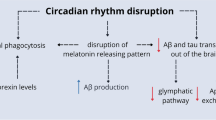Summary
Using the method of sulfide silver the distribution of zink in the hippocampal formation of rats was investigated. The investigation was extended to include changes in the distribution pattern after administration of Dithizon, Alloxan and Oxin.
-
1.
Under normal conditions certain layers in field h 3, h 4 and h 5 of the hippocampal formation gave a strongly positive reaction.
-
2.
During the first three hours following the administration of Dithizon the hippocampal formation remains unstained. After four hours, however, the reaction becomes as positive as normal reaction.
-
3.
During the first three hours following the administration of Alloxan and the first 2–3 hours after the administration of Oxin the hippocampus formation stains more intensely. Three and a half hours after the administration of Alloxan or Oxin the intensity of the reaction in the hippocampus formation is that of a normal control.
-
4.
The mechanism of the action of Dithizon, Alloxan and Oxin on the nervous tissue of the hippocampal formation is discussed.
Zusammenfassung
Mit Hilfe der Sulfid-Silbermethode wurde die Lokalisation von Zink in der Hippocampusformation von Ratten und ihre Veränderungen nach Dithizon-, Alloxan-und Oxinzufuhr untersucht.
-
1.
Im normalen Zustand reagieren bestimmte Schichten in den Feldern h 3, h 4 und h 5 des Hippocampus und dem Gyrus dentatus stark positiv.
-
2.
In den ersten 3 Std nach der Dithizongabe bleibt die Hippocampusformation vollkommen ungefärbt. Nach 4 Std wird die Reaktion wieder in den früheren, normalen Zustand zurückversetzt.
-
3.
In den ersten 3 Std nach der Gabe von Alloxan und den ersten 2–3 Std nach der Gabe von Oxin wird die Hippocampusformation im Gegensatz hierzu stärker angefärbt. 3 1/2 Std nach der Alloxan- oder Oxingabe wird die Intensität der Reaktion in der Hippocampusormation in den früheren Zustand zurückversetzt.
-
4.
Der Wirkungsmechanismus von Dithizon, Alloxan und Oxin auf das Nervengewebe der Hippocampusformation wird diskutiert.
Similar content being viewed by others
Literatur
Dunn, J. S., J. Kirkpatrick, N. G. B. McLetchie, and S. V. Telfer: Necrosis of the islets of Langerhans produced experimentally. J. Path. Bact. 55, 245–257 (1943).
Fleischhauer, K., u. E. Horstmann: Intravitale Dithizonfärbung homologer Felder der Ammonsformation von Säugern. Z. Zellforsch. 46, 598–609 (1957).
—, u. F.-K. Ohnesorge: Zur Pharmakologie des Dithizon. Naunyn-Schmiedebergs Arch. exp. Path. Pharmak. 235, 63–77 (1958).
Lazarow, A.: Functional characterization and metabolic pathways of the pancreatic islet tissue. Recent Progr. Hormone Res. 19, 489–540 (1963).
Maske, H.: Beobachtungen über das Zink in den Langerhansschen Inseln des Pankreas und seine Beziehungen zur Inselfunktion. Z. Naturforsch. 86, 96–104 (1953).
—: Über den topochemischen Nachweis von Zink im Ammonshorn verschiedener Säugetiere. Naturwissenschaften 42, 424 (1955).
McLardy, T.: Zinc enzymes and the hippocampal mossy fibre system. Nature (Lond.) 194, 300–302 (1962).
Okamoto, K.: Experimental studies on the pathogenesis of diabetes mellitus (Zinc theory of diabetes mellitus by Okamoto). Acta Schol. Med. Univ. Kioto 27, 43–65 (1949).
—: Experimental pathology of diabetes mellitus. [Japanese.] Tokyo-Kyoto: Nippon Isho Publ. Co. 1951.
Otsuka, N., T. Asako u. A. Kataoka: Über den histotopochemischen Nachweis von Zink in der Hippocampusformation verschiedener Säugetiere. [Japanisch.] Acta anat. nippon. 40, 267–273 (1965).
—, u. Y. Ibata: Über die quantitativen Veränderungen des Zinkgehaltes in der Hippo campusformation nach der Dithizonzufuhr. Arch. histol. jap. 27, 419–424 (1966).
- -Alteration of synaptic endings in hippocampal formation of rats after the administration of Dithizon. [Japanese.] (In press.).
Otsuka, N., u. M. Kawamoto: Histochemische und autoradiographische Untersuchungen der Hippocampusformation der Maus. Histochemie 6, 267–273 (1966).
—, and M. Umetani: Chemocytoarchitectonics of ammon's formation. Proc. Jap. Histochem. Ass. 3, 231–234 (1962).
Rose, M.: Der Allocortex bei Mensch und Tier. I. Teil. J. Psychol. Neurol. (Lpz.) 34, 1–111 (1926).
—: Die sog. Riechrinde beim Menschen und beim Affen. II. Teil des „Der Allocortex bei Tier und Mensch“. J. Psychol. Neurol. (Lpz.) 34, 262–401 (1927).
—: Cytoarchitektonischer Atlas der Gehirnrinde des Kaninchens. J. Psychol. Neurol. (Lpz.) 43, 354–440 (1931).
Timm, T.: Zur Histochemie des Ammonshorngebietes. Z. Zellforsch. 48, 548–555 (1958).
Author information
Authors and Affiliations
Rights and permissions
About this article
Cite this article
Otsuka, N., Ibata, Y. Über die Veränderungen des Zinkgehaltes in der Hippocampusformation der Ratte nach Dithizon-, Alloxan und Oxinzufuhr. Histochemie 12, 357–362 (1968). https://doi.org/10.1007/BF00278309
Received:
Issue Date:
DOI: https://doi.org/10.1007/BF00278309




